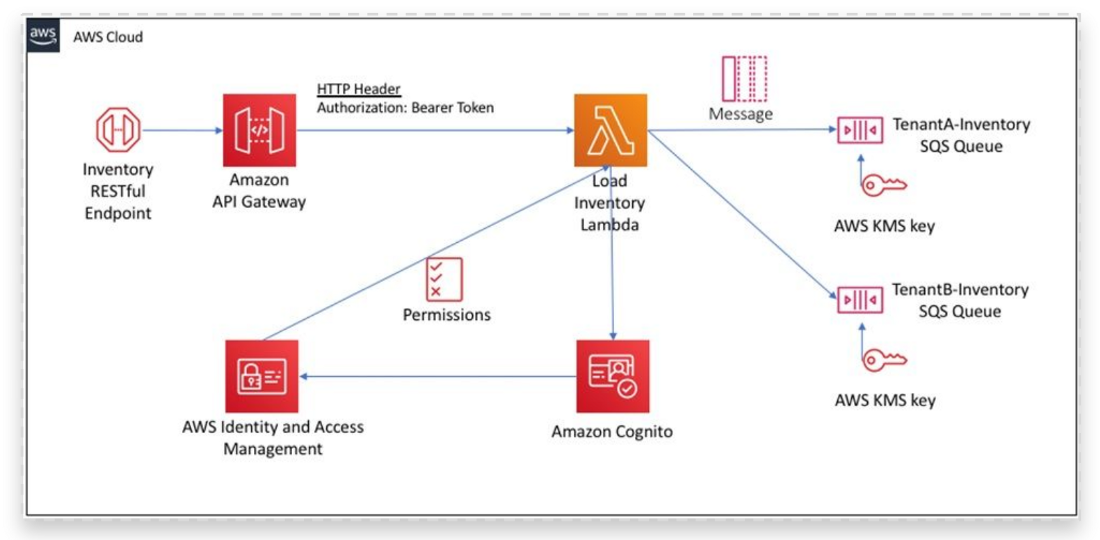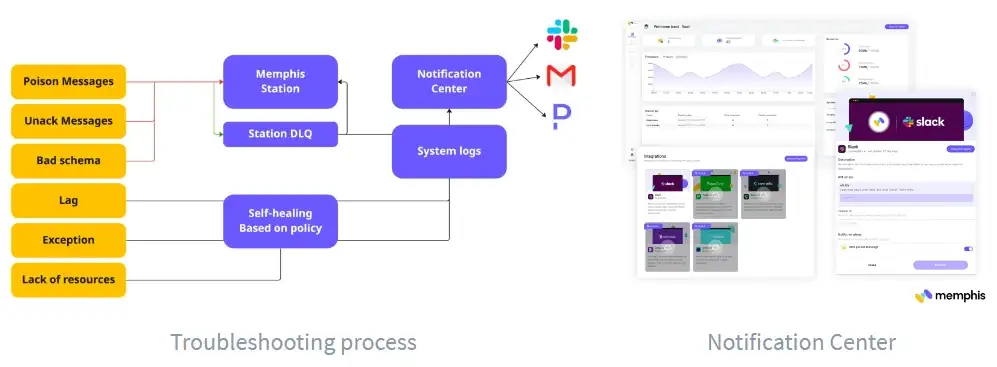AWS SQS vs Memphis.dev
This article describes the differences between AWS SQS and Memphis.dev.
Join the DZone community and get the full member experience.
Join For FreeWhat Is AWS SQS?
Amazon Simple Queue Service (Amazon SQS) offers a secure, durable, and available hosted queue that lets you integrate and decouple distributed software systems and components. Amazon SQS offers common constructs such as dead-letter queues and cost allocation tags. It provides a generic web services API that you can access using any programming language that the AWS SDK supports.
What Is Memphis.dev?
Memphis is a next-generation messaging queue.
A simple, robust, and durable cloud-native message broker wrapped with an entire ecosystem that enables fast and reliable development of next-generation event-driven use cases.
Memphis.dev enables building next-generation applications that require large volumes of streamed and enriched data, modern protocols, zero ops, rapid development, extreme cost reduction, and a significantly lower amount of dev time for data-oriented developers and data engineers.

Messaging
|
Parameter
|
Memphis
|
AWS SQS
|
|---|---|---|
|
Benchmark
|
300K messages per second per station (queue).
|
60K-100K messages per second
|
|
Message Retention
|
Policy-based (e.g., 30 days)
|
Acknowledgment based
|
|
Data Type
|
Transactional, Operational
|
Transactional
|
|
Consumer Mode
|
Smart broker/Smart consumer
|
Smart broker/dumb consumer
|
|
Topology
|
Publish/subscribe based
|
Not supporting broadcasting. 1:1 producer to subscriber
|
|
Payload Size
|
Up to 15M
|
Max of 256KB
|
|
Batch size
|
No limitation
|
Max of 10 messages
|
|
Use Cases
|
Massive data/high throughput cases | Simple use cases
|
Simple use cases
|
|
Delivery Guarantee
|
At least once, Exactly once
|
At least once
|
|
Message ordering
|
Message ordering is provided via consumer groups. By message key, messages are sent to stations.
|
FIFO is optional
|
|
Message priorities
|
Unavailable
|
Unavailable
|
|
Message lifetime
|
Since station messages are kept on file/memory. This can be controlled by defining a retention policy.
|
Because SQS is a queue, messages are discarded after being read, and an acknowledgment is given.
|
|
Clustering
|
Active-Active
|
Unavailable
|
|
Performance
|
Scale-up, Scale-out
|
No control
|
|
Multi-region
|
Supported*
|
No
|
|
Multi-tenancy
|
Supported*
|
No
|
|
Read-replicas
|
Supported*
|
No
|
|
Data striping across nodes
|
Supported
|
Unavailable
|
*Available for Memphis cloud users
Data Flow
SQS uses a distinct, bounded data flow. Messages are created and sent by the producer and received by the consumer.
Memphis uses an unbounded data flow, with the key-value pairs continuously streaming to the assigned station.
Data Usage
AWS SQS is best for transactional data, such as order formation, placement, and user requests.
Memphis works great for transactional and operational data like process operations, auditing and logging statistics, and system activity.
Message Retention
AWS SQS pushes messages to consumers. These messages are removed from the queue once they are processed and acknowledged.
Memphis is a log. It uses continuous messages, which stay in the station (queue) until the retention period expires.
Multi-Tenancy
AWS SQS doesn’t support multi-tenancy but through a lambda function, required to be coded and managed by the user that acts as a router.

Memphis supports multi-tenancy using namespaces which offers a complete separation from connections, producers, consumers, security, dedicated dashboard, including node selection.

Observability
Some level of observability can be received by using 3rd party apps like Cloudwatch/Datadog/New Relic. To understand the full path of a message, it is required to use AWS X-Ray and add some headers to each client. Notifications can be achieved by building a dedicated event queue with lambda triggers. Some alarms and triggers must be defined over 3rd party apps to enable lag identifications and latency in real time.

Memphis offers full Infra-to-cluster-to-data GUI-based observability, monitoring, real-time message tracing, and notifications embedded inside the management layer, including self-healing policies based on the defined events.


Features
|
Parameter
|
Memphis.dev
|
AWS SQS
|
|---|---|---|
|
GUI
|
Yes
|
Yes
|
|
Schema Management
|
Yes
|
No
|
|
Wildcard consume
|
No
|
Yes
|
|
Stream Enrichment
|
Yes
|
Yes
|
|
Ready-to-use source/sinks connectors
|
Yes
|
No
|
|
Stream lineage
|
Yes
|
No
|
|
Data-Level Observability
|
Yes
|
Yes
|
|
Self-healing
|
Yes + Managed service
|
Managed service
|
|
Deduplication
|
Yes. Modified bloom filter
|
Deduplication interval of 5 minutes
|
|
Dead-letter
|
Yes
|
Yes
|
|
REST Gateway
|
Yes
|
No
|
|
Consumer internal communication
|
Experimental
|
No
|
|
Production deployment environment
|
Kubernetes, Docker, Managed service
|
Managed service
|
|
Storage tiering
|
Disk, Memory, S3 for Archiving
|
Disk
|
|
Notifications
|
Slack, Email, More
|
With SNS and Cloudwatch
|
|
SDK support
|
Node js, Python, Go, .NET, Java, NestJS, and Typescript
|
C++, Go, Java, .NET, Python, node.js, Rust, Ruby, PHP
|
Published at DZone with permission of Yaniv Ben Hemo. See the original article here.
Opinions expressed by DZone contributors are their own.

Comments